ÁN GEL
C ARBAJAL
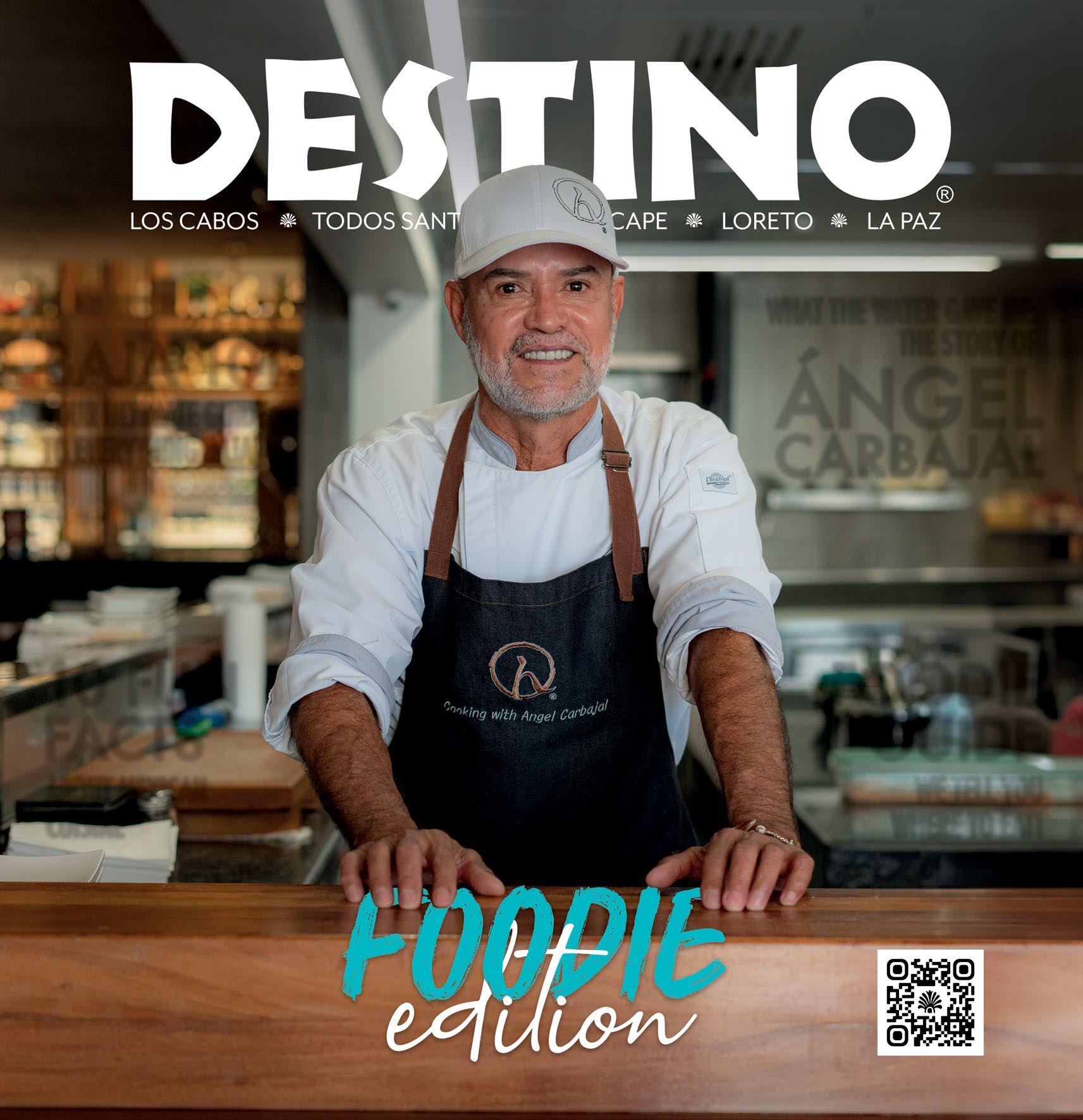

Marc h/Apr il 2024 DIGITAL VERSION

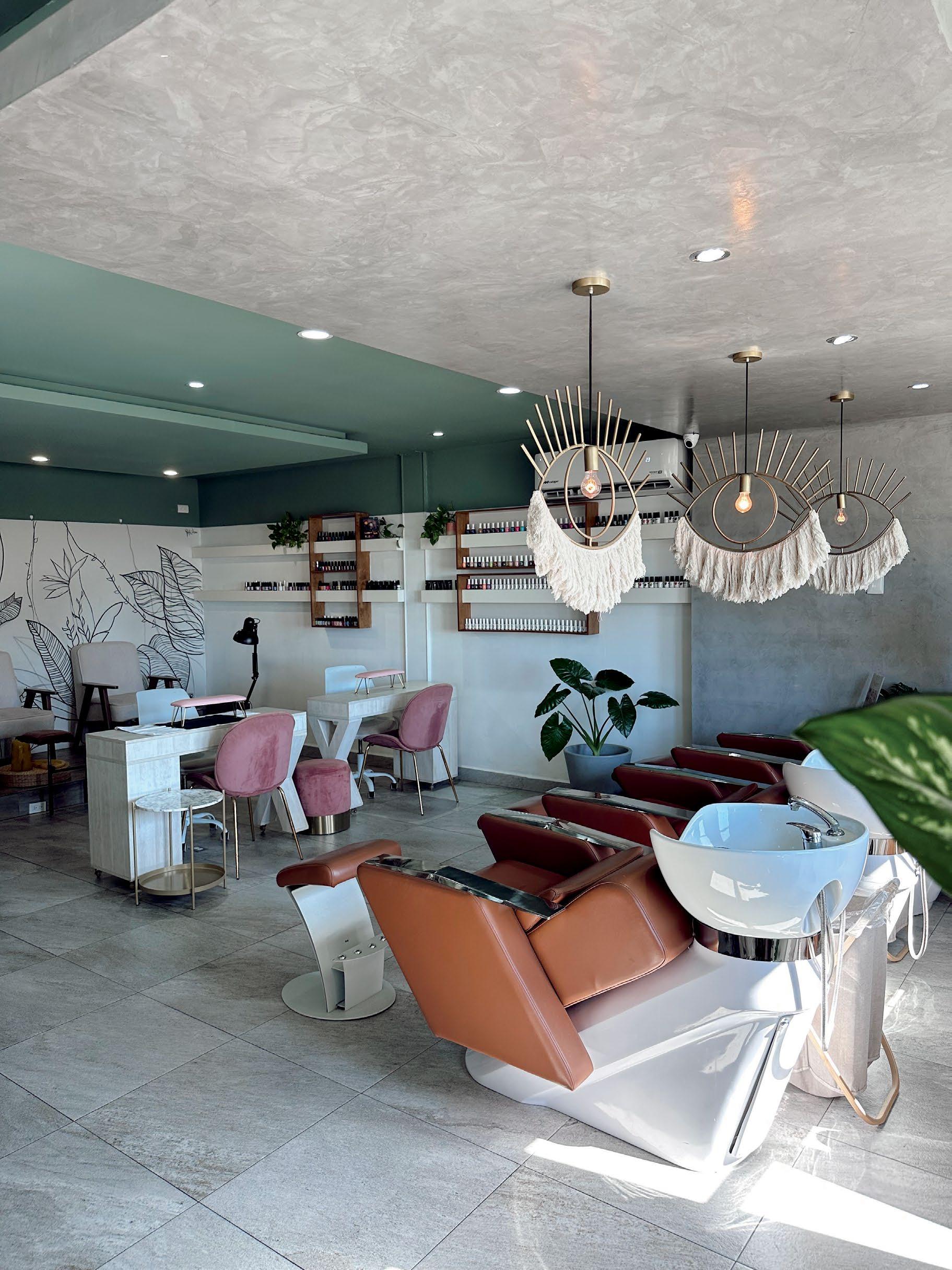








The Shoppes of Palmilla and new Las Olas Shops (by Home Depot) Fabulous furnishings, art, rugs, gifts, candles, accesories and much more. Bespoke interior design services. Barrie Livingstone +1.310.779.0310 www.houseofbarrie.com 624.237.2772 www.barrielivingstone.com
PUBLISHER
Owen Perry
EDITOR IN CHIEF
Dana Gimenez
INVESTMENT MANAGER
Lance Niederhaus
EDITORIAL COORDINATOR
M.P. Bulnes
GRAPHIC DESIGNER
Rebeca Beltrán
WRITERS / CONTRIBUTORS / PHOTOGRAPHERS
Joe Mazzeo-Writer
Cristina Galullo - Writer
Claudia Velo- Writer
Fiona Barfoot - Collaborator
Cabo Foodie Blog - Collaborator
Gerardo Montaño - Photographer
Erika Coatzin - Social Media Manager
Victor Suarez - Content Strategist
Gerardo Montaño - Webmaster
DISTRIBUTION
Christian Jimenez
SALES COORDINATOR
Giovanna Said SALES EXECUTIVES
Christian Jimenez
Yoselin Hideroa
COVER

DESTINOLOSCABOS.COM
PHOTO BY: Gerardo Montaño

PAGE 06
BAJA 101
PAGE 07
5 FAQS by Fiona Barfoot

PAGE 10
FUN FACTS ABOUT MEXICAN CUISINE! by Cristina Galullo
PAGE 12
A CLEAN EATING GUIDE TO LOS CABOS by M.P. Bulnes
PAGE 14
THE DESTINO FOODIE GUIDE
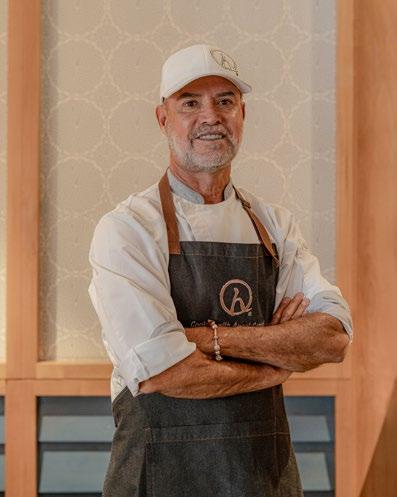
PAGE 16
WHAT THE WATER GAVE ME: THE STORY OF ANGEL CARBAJAL by M.P. Bulnes
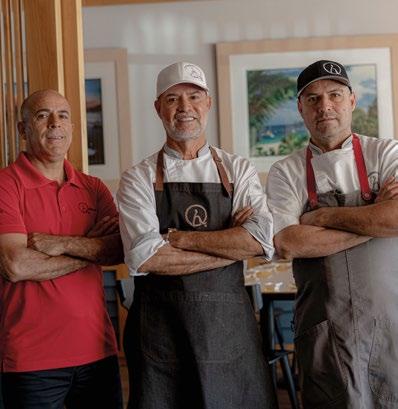
No.
PAGE 17
ABOUT CHOYERO FOOD by Claudia Velo

PAGE 20
THE CABO GOLF SCENE by Joe Mazzeo
PAGE 22
THE BAJA BUBBLE

PAGE 24 MAPS
PHOTO BY: Gerardo Montaño
CONTACT: dana@destinoloscabos.com Contact our sales team via Whatsapp: +52(624) 105-9700 +52(624)142-4949 DESTINO GROUP SA de CV Tél: 624) 105-9700/ (624)142-4949 / Dirección: Carretera Federal Libre Transpeninsular San José San Lucas. Km. 4.3, Local 6, Col. El Tezal, Cabo San Lucas, Baja California Sur / Email: contact@destinoloscabos.com / © 2021 Destino Group SA de CV / / NÚMERO 163 MARZO/ABRIL 2024 Todos los derechos reservados por Destino Group. / Prohibida la reprodución total ó parcial del contenido sin previa autorización por escrito de los editores. ISSUE 163 MARCH/APRIL 2024 Printed in Mexico. All rights reserved. No part of this publication may be reproduced in any form without the written consent of the publisher. DESTINO GROUP welcomes all written and photographic material. We cannot guarantee return. Rights to publish unsolicited material are retained for 12 months. Circulation throughout Southern Baja. For more information on distribution visit: DESTINOLOSCABOS.COM Follow us: @destinomagazine
EDITOR’S
-
2024 CONTENT ON THE COVER Ángel Carbajal, chef and owner of Nicksan Cabo San Lucas and San Jose del
163
Foodie EditionMarzo /Abril
Cabo (Palmilla).
10
FOODIE EDITION MAR / ABR 2024 04
LETTER FROM THE EDITOR
Dear readers,


Crafting our March-April Foodie Edition is a true delight for us! The culinary landscape of Los Cabos has never been more exciting, and this issue of Destino Magazine is your indispensable companion through this gastronomic adventure.
We are honored to feature Chef Angel Carbajal from Nicksan on our cover, showcasing his innovative Japanese Mexican fusion cuisine that has left an indelible mark on Los Cabos' gastronomic scene. Dive deeper into Chef Angel's journey, inspirations, and profound connection to local ingredients in an exclusive interview.
In this edition’s Baja Bubble, Nobel Prize laureate George Smoot, renowned for his groundbreaking contributions to science, shared his unique perspective on Cabo, its natural beauty, and the imperative need to preserve the environment. As a seasonal resident of Cabo, Smoot has kept a low profile in the media, making this interview a rare glimpse into his personal connection with our destination.
Make sure to check out Cristina Galullo 's "10 Fun Facts About Mexican Cuisine," which offers a delightful exploration of the cultural significance and global impact of Mexico's culinary traditions. Also in this edition is Claudia Velo's article, "Choyero Food The Authentic Flavor of Baja California Sur," invites us to discover the genuine local dishes of Los Cabos, showcasing the creativity and resilience of the cooks who shape the region's unique culinary heritage. Meanwhile, Cabo Foodie Blog's "Hot Stuff" keeps you updated on the latest culinary gems, from beachfront champagne bars to hidden jazz delights.
Destino is not just within these pages; we are everywhere! Tune in to our radio show on EXA 103.9 FM, catch our podcast on any platform, and visit our website and social media for a delightful array of content. We love hearing from our audience, so reach out on social media, share your t houghts, and be a part of the Destino community!
Buen provecho!
DANA GIMENEZ Editor in Chief
@ askdanatv
MEET THE TEAM:







Destino Magazine, a bimonthly publication with over 15 years of history and more than 160 print editions, is a testament to the allure of Southern Baja and that print isn’t dead. It is more alive than ever! The dedicated team behind the magazine, driven by passion and love for the region, carefully curates each issue to transport readers on a captivating journey. The magazine is created in the heart of Cabo San Lucas, where the action unfolds. Through stunning visuals, stories of local life, and a rich exploration of the destination's history, Destino Magazine goes beyond a traditional publication. It is a celebration of the unique landscapes, culture, and extraordinary experiences that define Baja California Sur!

 CHRISTIAN JIMENEZ Head of Distribution
VICTOR SUÁREZ Content Strategist
ERIKA COATZIN Digital Manager
YOSELIN HIDEROA Sales
MÓNICA BULNES Editorial Coordinator
REBECA BELTRÁN Graphic Designer
CHRISTIAN JIMENEZ Head of Distribution
VICTOR SUÁREZ Content Strategist
ERIKA COATZIN Digital Manager
YOSELIN HIDEROA Sales
MÓNICA BULNES Editorial Coordinator
REBECA BELTRÁN Graphic Designer
FOODIE EDITION MAR / ABR 2024 05
DESTINATIONS:
Each town or city in Baja California Sur is different and unique. Road trips in Baja are part of the culture and are very easy to do for someone that is just visiting. Scan this code and take a look of some of the main areas and destinations to visit, but there is much more to see!


USEFUL INFORMATION:
BEACH GUIDE:
Check out our Beach Guide and dive into personalized insights on every beach, discovering what makes each one distinct. We'll equip you with essential details, ensuring you choose the perfect shoreline tailored to your desires for an unparalleled experience in Los Cabos.
scan this code to see full guide


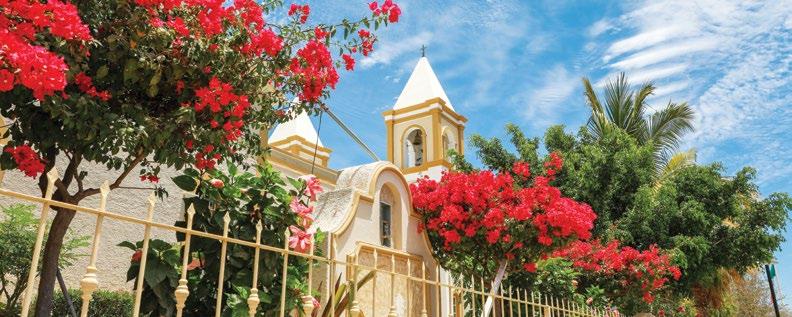
ACTIVITIES:
Dive into adventure with Baja 101's Activities Section, a curated gateway to thrill and exploration in Los Cabos. From water sports to cultural excursions, our guide unveils a spectrum of experiences. Discover the pulse of the region, ensuring your journey is enriched with unforgettable moments and dynamic activities at every turn.
Our Useful Information section is a lifesaver in unforeseen circumstances. Uncover essential details on emergency protocols, contact numbers, and practical tips for a seamless stay in Los Cabos. Navigate with confidence, knowing that we've got you covered with crucial information to ensure your safety and peace of mind.

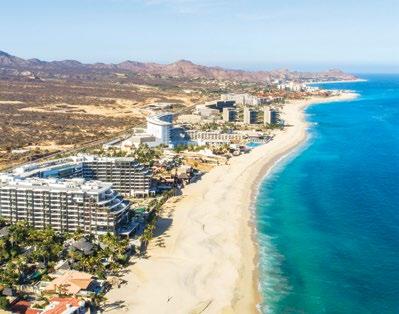


FOODIE EDITION MAR / ABR 2024 06 baja 101

If you consider yourself a foodie like I do, Cabo is a premier destination for tantalizing your tastebuds! One of the most asked questions on our Facebook page is “Where should we eat?” Here are the culinary Top Five FAQS, from one food lover to another!
5
F A Q
Sby Fiona Barfoot

1. What should we eat on the beach?

There are few experiences better than eating with your toes in the sand.You can find various types of restaurants and bars along Medano beach, but my favorite budget-friendly option is the beach vendors. Here you can find cinnamon sugar coated churros, served with creamy dulce de leche sauce. You can savor fresh juicy mango, coated with Tajin; a blend of dried chile peppers, lime and sea salt. There are homemade tamales, served hot and my favorite, fresh chocolate clams with spicy salsas and lime.
2. Where can they cook what I catch?
After a day out on one of our many fabulous fishing charters, you can really work up a hunger! I like to take my catch to my friends over at The Funky Olive. I love this spot right on the marina (also great for people watching). You can take your fresh fish and they will prepare it for you in various ways, such as sushi, breaded and fried and fresh tataki; you name it! Served with all the sides, as well as salsa and chips. Don’t forget to wash it down with a nice margarita. Not a fish fan? They’ve got great burgers, pizza and wings too, this spot definitely gets my stamp of approval.
3. What other types of international cuisines can I find in Los Cabos?
In Cabo, we have a lot more than just Mexican food! Japanese, Italian, Classic American you name it! One of my favorite spots is Everest Curry House. My hometown of Vancouver has some great Indian cuisine and this is my go-to spot when I am craving! The owners Sam and Thakkar are from Nepal and India respectively so you really get some authentic flavors. Some of my favorites are the creamy butter chicken, the mutton biryani and the paneer veggie tikka. Served with warm buttery garlic naan bread and washed down with their special lemonade. Tell them Fifi sent you!
4. What other culinary experiences are there?
Want to try more than just one taco joint? Consider taking a taco tour, which involves specialized walking tours to various 'hole in the wall' taco spots. I think this is a really fun activity with kids too. Some tours provide historical information abot the food you are eating and take you to spots you might not have discovered otherwise. Cooking classes are also a fabulous idea, particularly for bachelorette parties and groups. Many of our fabulous will do an in-home class and a few of our higher end farm-to-table restaurants offer these also.
5. Where can we go for special occasions?
Want to go over-the-top? Los Cabos has some fabulous high end choices for dining. From a seven-course meal with paired wine, sitting on a cliff overlooking the ocean, to a true farm-totable experience, we’ve got it all! One of my favorite brunch spots serves you the full menu with 2 cocktails. As a bonus, they have rescue puppies on-site for you to snuggle with and maybe even adopt! For these higher end spots, it’s absolutely necessary to make a reservation ahead of time, some of them book up months in advance.
STUFF

Welcome to a delicious journey through the flavors of Cabo! We are thrilled to be a part of this incredible Foodie issue, and we can't wait to share our passion for all things culinary with Destino Magazine readers.
NAMI CHAMPAGNE BAR BY KRUG, Nobu Los Cabos' latest addition
If you're looking for a beach club vibe restaurant, you will instantly fall in love with Nami Champagne Bar by Krug. With an unparalleled location on the Los Cabos shoreline overlooking the Pacific Ocean, you can enjoy a variety of dishes focusing on fresh seafood and classic Nobu gastronomy for breakfast and lunch.
Breakfast: 7:00 am to 11:00 am / Lunch: 11:30 am to 4:30 pm
Pool Service: 9:00 am to 5:00 pm
*Upon availability, reservation is necessary.

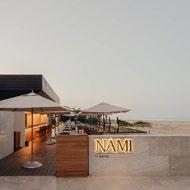
ZENNA RESTAURANT, a new addition to Los Cabos
Zenna Restaurant opened its doors last October inside Palmilla Dunes. Chef Alexis Palacios brings a creative Asian-Latin culinary fusion showcasing the fresh and authentic flavors of Baja California.
Breakfast: Tue to Sun 8:00 am to 12:00 pm
Dinner: Open Daily 6:00 pm to 10 pm
JAZZ ON THE ROCKS, a hidden gem for jazz lovers
If you are looking for a vibrant experience of flavors and music, you will love this hidden gem. Jazz on the Rocks' location is at the highest point of Sunset Monalisa restaurant, and it features an array of fantastic gastro-pub delights. Enjoy their special weekly event every Thursday, Ritmo Latino Nights, and be ready to dance the night away.
Monday to Sunday, 4:00 pm to 11:00 pm


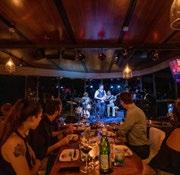
TOROTE RESTAURANT, Crafted Cocktails
Along with the delicious menu at Torote Restaurant, we found a fantastic cocktail that captivated our hearts. We recommend you try the amazingly crafted Torotini cocktail. It's filled with freshness and smoky flavors gifted by mezcal. We are sure you'll love it as much as we do.
Breakfast: Fri - Sun: 8:30am to 2:00pm
Dinner: Open Daily 5:00 pm to 10:30 pm
Cabo Foodie Blog is more than just a platform; it celebrates the vibrant and diverse culinary scene that makes Cabo a haven for foodies. Our mission is simple – to explore, savor, and share Cabo's extraordinary culinary experiences. We are thrilled to share the latest news and happenings around Los Cabos. Bon appétit!
FOODIE EDITION MAR / ABR 2024 08 baja 101
scan
this code to learn more

10 FUN FACTS ABOUT MEXICAN CUISINE
by Cristina Galullo
From the simplicity of a taco de carne asada to the intricate flavors of chiles en nogada with over 20 ingredients, Mexican gastronomy is a rich blend of history, tradition, and irresistible taste. Rooted in pre-Columbian times, this culinary heritage has not only captured the hearts of food enthusiasts worldwide but has also earned recognition as a UNESCO-designated Intangible Cultural Heritage of Humanity. Join us as we explore ten intriguing facts that showcase the cultural significance, global impact, and delicious complexity of Mexican culinary arts.
1. A TREASURE WORTH PRESERVING In 2010 UNESCO designated Mexican food as Intangible Cultural Heritage of Humanity. The organization justifies their decision with a crystal-clear affirmation: “Traditional Mexican cuisine is a comprehensive cultural model comprising farming, ritual practices, age-old skills, culinary techniques and ancestral community customs and manners”. Going beyond the “taste factor”, Mexican cuisine is seen as a peculiar trait of a culture as well as a means of sustainable development.
2. THE FIRST MEXICAN COOK, NOT A GUY BUT A BOO The richness and diversity of Mexican culinary arts were shaped in written form for the first time in 1831. Hundreds of traditional recipes were collected in a three-volume book entitled “El Cocinero Mexicano o Colección de las Mejores Recetas para Guisar al Estilo Americano” (The Mexican Cook or A Collection of the Best Recipes for Cooking in the American Style).
3. A FAVORITE OF GOURMET PALATES Mexican Cuisine achieved a notable milestone in 2023 when Taste Atlas, a leading platform for culinary rankings, placed it at the #7 spot on its Best Cuisines list. As a result, tacos de carne asada, cochinita pibil (specially marinated pork), chilaquiles, carnitas (pork), tacos gobernador, tacos al pastor, gringas and guacamole show up in the 100 bestrated dishes worldwide. An award that showcases the enduring popularity and global influence of Mexican food.
4. AMERICANS LOVE TACOS Americans have developed a passion for tacos, consuming them voraciously across the country at the stunning rate of 4,5 billion tacos per year. From street vendors to fancy restaurants, tacos feature an array of fillings that caters to all tastes so to become a culinary icon deserving a celebration. Born as an advertising strategy of a US fast food chain in 2009, the National Taco Day is now celebrated on October 4th. Similarly, also originated by commercial campaigns, Tacos Festivals are held in Mexico on March 31st.
5. MUCH MORE THAN ORIGINAL, THEY ARE D.O. A Designation of Origin, is produce grown, processed and packaged in a specific geographical area where the properties of its soil confer peculiar characteristics to the final product. Such recognition ensures that customers receive genuine, authentic, quality goods while supporting local economies. The list is headed by spirits: Tequila (Jalisco, Nayarit, Tamaulipas, Michoacán, and
Guanajuato); Mezcal (Guerrero, Oaxaca, Durango, Zacatecas, and San Luis Potosí); Bacanora (Sonora); Sotol (Chihuahua, Coahuila y Durango); Charanda (Michoacán). Cocoa (Grijalva in Tabasco) is another national pride, as well as coffee (Veracruz, Chiapas), Vanilla (Papantla in Veracruz), Rice (Morelos), Mango Ataulfo (Soconusco in Chiapas); last but not least and actually very hot…chile habanero (Yucatán).
6. CHILI PEPPERS: AN EXTENDED FAMILY OF 64 According to the National System of Phytogenetics for Food and Agriculture (Sinarefi), Mexico is home to 64 different types of chilies, 25 of which from Oaxaca. The renowned habanero is the hottest, followed by chiltepín, tabasco, serrano, chile de arból, jalapeño. But guess what? This writer’s favorite Chipotle, the chili used in the sauce for albondigas (meatballs) is not listed among the 64. The oversight is quickly explained, though: chipotle is dried and smoked jalapeño, therefore not a kind by itself.
7. IT’S EASY TO TALK MOLE The word mole comes from the nahuatl mulli (mix or sauce) and it is a mixture of chilies, seeds, herbs, spices, nuts and often, but not always chocolate. In fact, there are seven kinds of mole that are named from their coloring: black, red, green yellow, Poblano (brown), and the less common mole Manchamantel (that translates to “tablecloth staining”) and Chichilo, traditionally served at funerals.
8. THE SERENDIPITY OF NACHOS The king of appetizers was created by accident one day in 1943, when a group of hungry women dropped in at the Victory Club restaurant in Piedras Negras (in the state of Cohahuila, adjacent to the U.S. border). It turned out that they were the wives of some US soldiers based at Fort Duncan, Texas, on a day trip beyond the borderline. The restaurant was closed and the kitchen pantry almost empty but the starving ladies were lucky enough to be welcomed by chef Ignacio, aka Nacho, Ayala who fried some triangles of tortilla, topped them with melted cheese and sliced jalapeño. And this is how Nacho invented nachos.
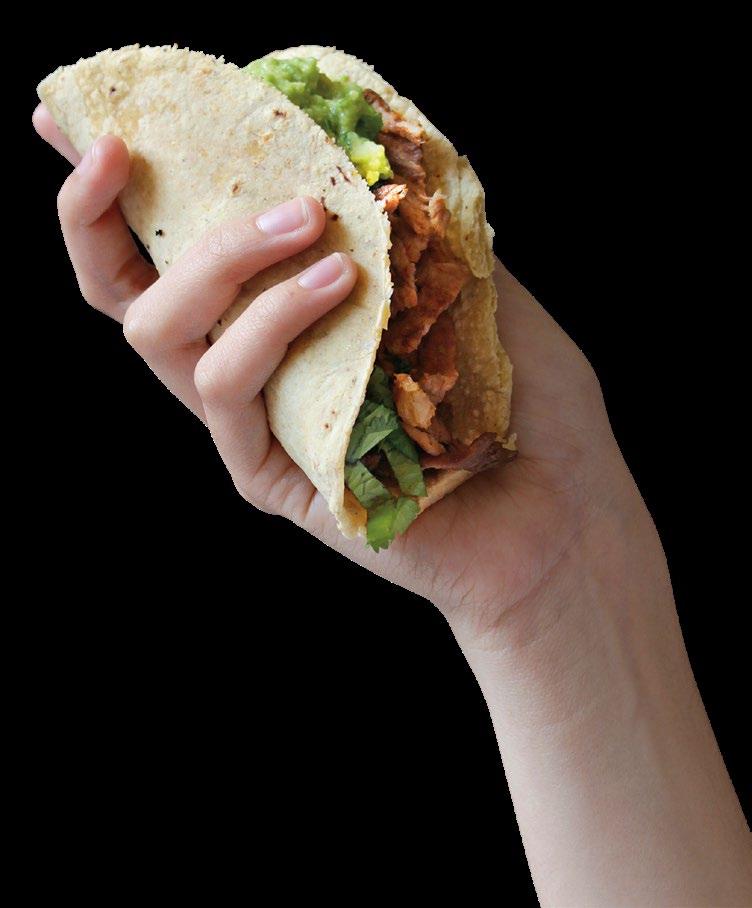
9. FAJITAS: FROM TRASH TO DISH Don't be fooled by the Spanish-sounding name; fajitas are not “made in Mexico”. They trace their roots in the ranchlands of South Texas in the 1930s, where Mexican cowboys were given meat trimmings like skirt, hide and entrails, as part of their wage. Putting all their creativity at work, the rancheros marinated and grilled tough beef skirt steak over open flames and turned throwaway cuts into a delicious dish. Fajitas gained popularity in the 1960s and 1970s as Tex-Mex cuisine spread across the United States. Restaurant chefs in Austin and Houston popularized fajitas, presenting them sizzling on hot iron skillets, captivating diners with both aroma and spectacle.
10. WHAT'S IN A NAME? "A rose by any other name would smell as sweet" stated Shakespeare. Let’s wonder, then, what the Bard would say about the name aguacate, originally ahuacatl that in the nahuatl language means “testicle”. It makes sense, if we consider the shape, the roughness of the peel and how the fruit hangs from the tree (usually in pairs!). By any other name avocado would taste as yummy, wouldn’t it?
“Mexican food reflects the character of its people: generous, lively, sometimes fiery, and always adaptable.” - Chef Gourmet website.
FOODIE EDITION MAR / ABR 2024 10

A CLEAN EATING GUIDE TO LOS CABOS
by M.P. Bulnes
As plane tickets are secured, hotel rooms booked, and suitcases packed, the excitement kicks in. The countdown to a trip feels special when it promises sunny days and sandy toes. Planning activities, especially in a fun destination like Los Cabos, heightens the anticipation. Yet, for me, the most thrilling part is deciding where to eat.
Once on the plane, we mentally prepare to step out of our routines. Whether we've been working hard or maintaining a healthy groove, breaking from it might be a bit nerve-wracking. Margaritas and tacos await on the other side of the border, but we don’t want to go home feeling overindulged.
In recent years, a clean eating trend has gained traction, turning the culinary scene into a haven for health-conscious travelers. Clean eating involves foods close to their natural state, perhaps organic, with minimal use of additives. In Baja, with its ocean wildlife and ecosystems, this trend thrives. Restaurants and hotels offer a variety of options for those seeking the
freshest ingredients. Here are three clean eating options to consider in Los Cabos:
1. FARM-TO-TABLE DINING:
Los Cabos has fully embraced the farmto-table movement, offering visitors the chance to savor the freshest local produce nurtured by the state's unique agricultural landscape. In Baja California Sur, they mainly use watering systems for farming and don't depend on rain for their crops. Diverse crops thrive here, including corn, beans, potatoes, and wheat; colorful vegetables and fruits like chili, tomatoes, melons, watermelons, onions, and zucchinis; organic foods such as basil, tomatoes, and peas; and enduring plants like asparagus, strawberries, avocados, mangoes, figs, oranges, dates, and more. This variety of crops is the basis for the farm-to-table experiences at places like Flora Farms, Acre, and El Huerto. Whether they grow their own produce or collaborate with nearby farms, these establishments celebrate sustainability, bringing the essence of Baja's rich harvest directly to your plate.
Exploring another country's cuisine is a worthwhile challenge. As you explore Los Cabos, embark on a clean eating scavenger hunt. Let's not forget the importance of supporting local businesses that care for the land. These establishments play a vital role in promoting sustainability and responsible practices. By choosing these places, you not only savor the authentic flavors of the region but also contribute to the well-being of the local environment and community. So, let your culinary journey be a celebration of both delicious meals and conscientious choices.
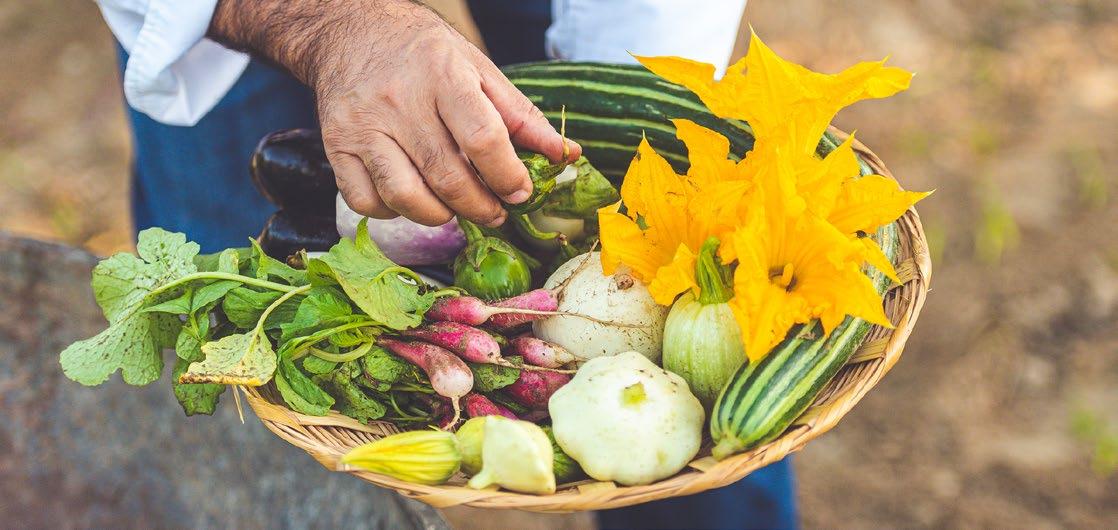

2. FRESH SEAFOOD:
The local seafood is not only a must, but a fantastic way to embrace clean eating. They serve up delicious dishes like ceviche and shrimp aguachile. Look for places that prioritize sustainable fishing practices. It's not just about the flavors; it's about enjoying the sea responsibly and savoring the variety of fresh dishes the region has to offer. Check out Las Mariscadas, Cabo Seafood and Mariscos Mazatlan!
3. PLANT-BASED PARADISE:
The rise of plant-based diets hasn't skipped Los Cabos. Vegan restaurants, including for example Chula Vegan Café in San José del Cabo, primarily focus on plant-based, whole foods such as fruits, vegetables, grains, legumes, nuts, and seeds. These foods are rich in essential nutrients, fiber, and antioxidants, contributing to a wellrounded and nutritious diet. Their menus typically avoid or minimize processed and refined foods, emphasizing a commitment to clean, wholesome eating, which make vegan restaurants a great option for the health conscious traveler!

FOODIE EDITION MAR / ABR 2024 12
Photo by: Gary Blake




FREE DELIVERY !
BREAKFAST
THE LEDGE AT THE CAPE
Cuisine: Global, International, Mexican, American
Hours of operation:
Breakfast Daily, 7:00 a.m- 11:30 a.m.
Location: México 1 Km 5, Misiones del Cabo
EL HUERTO FARM TO
TABLE
Cuisine: Mediterranean, Asian, International
Hours of operation:
Breakfast daily, 8:00 a.m- 12:00 p.m.
Location: Rancho San Angel, Cabo San Lucas
San José
PAN SPRINGS
Cuisine: Mexican, International
Hours of operation:
8:00 a.m. -8:00 p.m.
Location: Carretera
Transpeninsular km. 29.5
RUBA’S
Cuisine: Bistro, Comfort Food, Mediterrenean
Hours of operation:
Breakfast Mon-Wed-Sun 8:00 a.m.-1:00 p.m
Location: Jose Maria Morelos 8, Downtown
PEZ GALLO
Cuisine: Mexican, Latin, Coffee, Healthy
Hours of operation:
8:00 a.m.- 2:45 p.m.
Location: Plaza Jardin Mijares, Miguel Hidalgo 5, Downtown
As your ultimate guide to everything Los Cabos, it was very exciting and fun to put together a restaurant guide! We love to showcase local businesses that pride themselves in serving visitors from all over the world with the traditional Mexican hospitality. You can find breakfast, lunch and dinner options in both Cabo San Lucas and San Jose del Cabo, their operating hours and locations. We hope this guide is helpful and if you happen to visit any of our recommendations don’t forget to say you saw them on Destino! Buen provecho!


LUNCH DINNER
INFUSION ART CAFFE
Cuisine: Mexican, American, Coffee
Hours of operation:
7:00 a.m.-10:00 p.m.
Location: Km. 4.5 Plaza Carretera Transpeninsular.
TACOS GARDENIAS
Cuisine: Mexican, Seafood
Hours of operation:
8:00 a.m.-10:00 p.m
Location: Calle Paseo a la Marina Lote 31
WACHINANGOS
Cuisine: Seafood, Mexican, Grill
Hours of operation:
8:00 a.m. 10:00 p.m.
Location: Niños Heroes, Downtown
CABO WABO
Cuisine: Mexican, Bar, Pub
Hours of operation:
9:00 a.m. - 2:00 p.m.
Location: Lazaro Cardenas and Vicente Guerrero, Downtown
ZIPPERS BAR & GRILL
Cuisine: Mexican, American, Seafood
Hours of operation:
8:00 a.m.- 10:30 p.m.
Location: Carretera
Transpeninsular km. 28.5
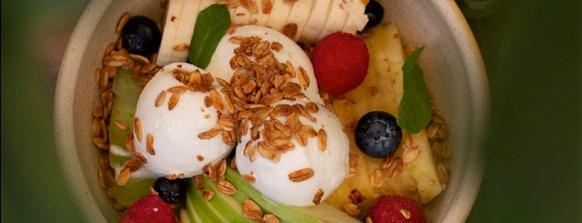
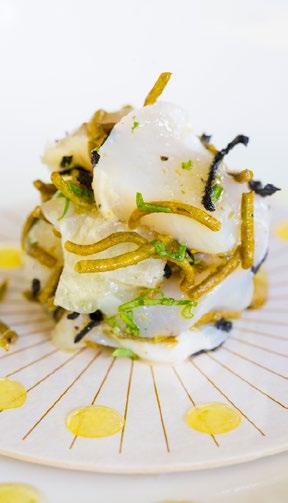
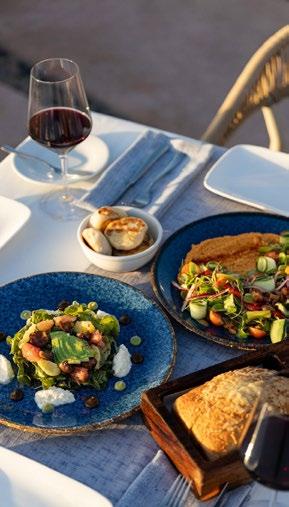
NICKSAN
Cuisine: Asian, Fuision, Hours of operation:
12:00 p.m.-11:30 p.m.
Location: Blvd. Marina Lot 10, Downtown
SUNSET MONA LISA
Cuisine: Mediterranean, International, Seafood
Hours of operation: 4:00 p.m.- 11:00 p.m.
Location: Carretera Transpeninsular km 6.5
THALAY THAI AT MONTAGE
Cuisine: Thai
Hours of operation:
6:00 p.m.-9:00 p.m.
Location: Carretera Transpeninsular km 12.5
KITCHEN TABLE
Cuisine: Seafood
Hours of operation:
5:00 p.m.-11:00 p.m.
Location: Jose Maria Morelos, Downtown San José del Cabo
COME A CASA
Cuisine: Italian
Hours of operation: 3:30-10:00 p.m.
Location: Ignacio Zaragoza, 5 de Febrero, San José del Cabo, B.C.S.
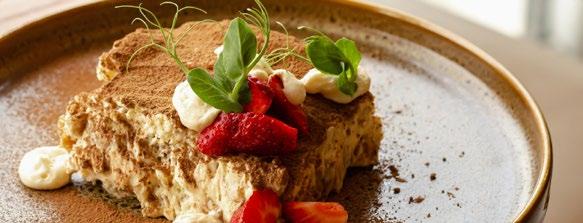
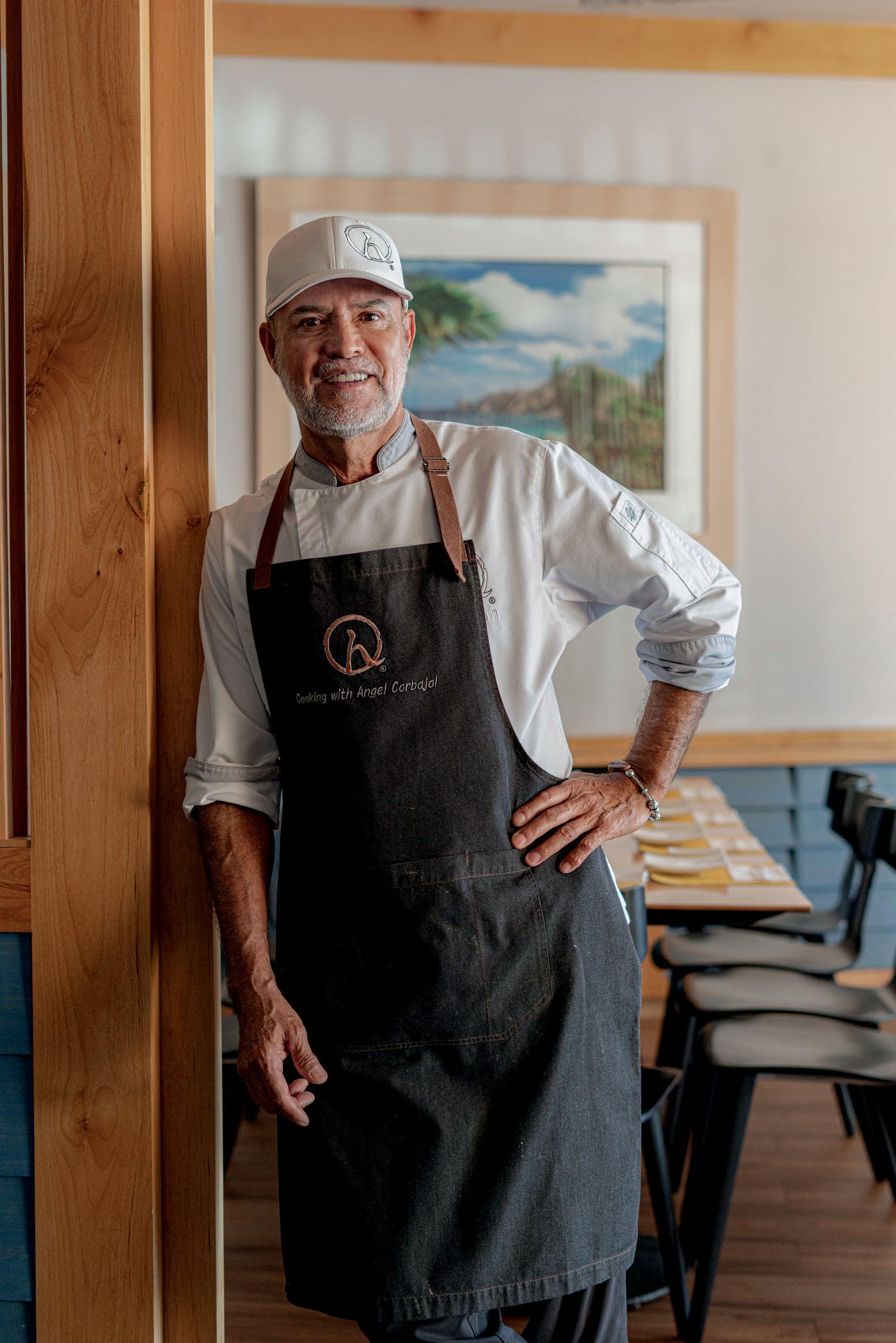
FOODIE EDITION MAR / ABR 2024 14
The Ledge at the Cape
SAN
SAN JÓSE CABO
LUCAS
Nicksan
Sunset Monalisa
Cabo Wabo
Pez Gallo
Come a Casa


What The Water Gave Me: The Story of Ángel Carbajal
by M.P. Bulnes
This story begins underwater. It was the eighties, and there were only a handful of boats in the bay. Beneath the surface, the sheer diversity of life, from the tiniest crustaceans to the magnificence of pelagic species like marlin and dorado, made Cabo San Lucas’ waters so abundant and alive that anyone lucky enough to behold it was inevitably drawn to it. Angel Carbajal, originally from Michoacán (a state in western Mexico), is among those to whom the ocean revealed itself and its treasures. Surrounded by fish, he found his calling.
The Early Days
When he wasn’t scuba diving or fishing, Angel worked as a service assistant. Back then, you could count the restaurants in Los Cabos with one hand. It was a time where the fishing culture was unique; there were plenty of fish, and it remained untainted by massive commercialization.
As guardians of the ocean’s grace, the community cared for it and in return they received the freshest of treasures. What was caught by locals during morning dives or fishing excursions early in the morning was prepared and served on diners' plates by nightfall. Being immersed in these practices laid the foundations of how Angel would run his restaurant later on.
Fateful Encounters
“Becoming a chef or cook, as I prefer to define myself, wasn't in my initial plans," he shared. In 1985, his life took an exciting turn. Fate brought Angel Carbajal and Masayuki Niikura, a Japanese restaurateur, together. At that time, Angel had worked his way up to become the manager at Señor Sushi, an international restaurant in San Lucas, and Niikura was a frequent visitor during his vacations.
One day, when Niikura's friends arrived at Señor Sushi, he approached Angel with a special request. Niikura asked if he could step behind the bar and prepare sushi for his friends. Without hesitation, Chef Carbajal agreed.
A year later, Chef Niikura suggested the business idea of exporting fish to Japan to Angel. The potential impact of such a endeavor on the ecosystem was concerning and he had no option but to decline. Although it was a promising deal, his love for the ocean was bigger. Angel was later offered a partnership in a project called
"La Terraza," previously situated in Plaza Bonita near the marina. When he extended an invitation to Chef Niikura to participate, he quickly agreed and generously offered to provide the restaurant with everything it required. Having recently dismantled a restaurant in Los Angeles, Chef Niikura supplied La Terraza with an abundance of kitchen supplies, uniforms, plates, and cutlery. Angel embarked on the mission of making it a hit and achieved it. Given the triumph of La Terraza, Chef Niikura proposed a new venture to Angel: a Japanese restaurant, and thus, Nick San was born.
Opening a restaurant in Los Cabos presented its challenges, Baja California Sur might as well be an island, but Chef Ángel has always approached his work with passion. From the beginning, Nick San stood as a pioneer in the restaurant industry of Los Cabos, marking an era in the region. This restaurant distinguished itself as one of the first in the area to introduce the novel concept of an open kitchen. It also earned the title of being the first restaurant in Los Cabos with air conditioning. For those who have experienced a scorching August day in Cabo, know this achievement was nothing short of an oasis.
On the other hand, there's no better place to source fresh seafood for a restaurant than Los Cabos. Angel learned to take what the water gave him with the utmost respect by adopting practices that align with the principles of sustainable fishing. Embracing a philosophy of responsible sourcing, he carefully selects local and seasonal seafood, supporting the region's fishermen and promoting a healthy balance within the marine ecosystem. Is it harder to go the extra mile with these practices? Yes, but much like the firm stance he took in rejecting the deal to export fish to Japan, Angel had no option—he had made an oath to the ocean.
Breaking Rules, Shaping a Legacy
The signature of Nick San lies in its distinctive fusion of Japanese and Mexican culinary traditions. Under the guidance of Chef Niikura, Angel learned the principles of traditional, authentic Japanese cuisine. He mastered the rules before daring to break them, bringing innovation and creativity to its traditions. The idea to blend these two rich heritages emerged from the scarcity of ingredients in the region 30 years ago, transforming a challenge into a defining strength. The infusion of

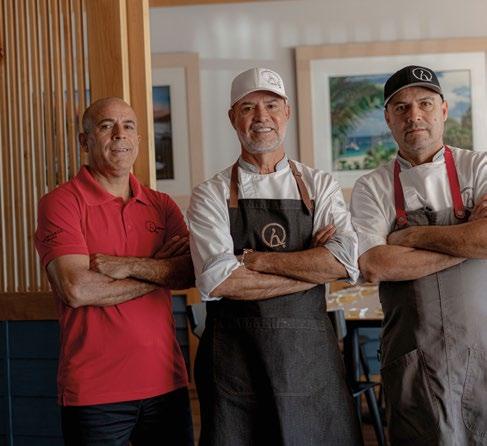
FOODIE EDITION MAR / ABR 2024 16
Jorge, Ángel y Edgar Carbajal
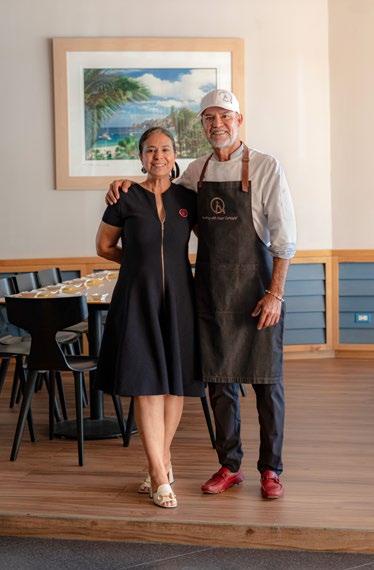

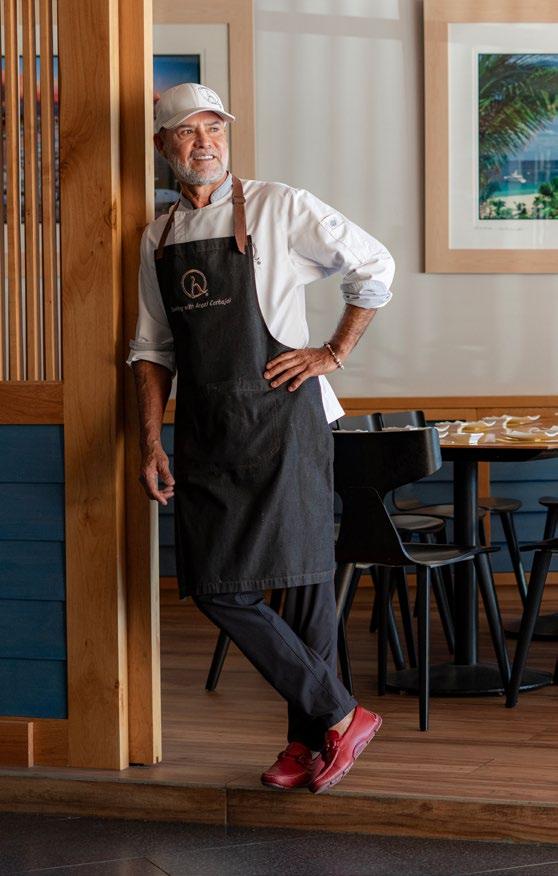
Mexican elements like cilantro, avocado, chilies, onions, garlic, and mango shaped the legacy of Nick San.
The Heart of Nick San
The majority of the dishes served at Nick San are Chef Ángel's own creations. The joy is found in its sauces, crafted with the desire to evoke the magic of specific moments and places. These sauces are made every day by the same person to ensure the exact same flavor every single time. However, the true heart of Nick San lies in its people. If you pay close attention, you might spot Angel’s sister, Carmen, impeccably dressed and running around to ensure everything is in order. Her meticulous attention to detail and work ethic is part of what makes Nick San such a special place. As a family business, Ángel has included his family in every aspect possible. If Chef Ángel were to choose a favorite dish, it would undoubtedly be the Tuna Tostada – a creation crafted especially for his mother.
Enduring Success
Celebrating its 30th anniversary this year, Nick San continues to shine as a culinary trailblazer in Los Cabos. It has expanded its legacy beyond its original location, boasting its presence in Palmilla. This growth signifies not only the enduring success of the restaurant but also its ability to evolve and adapt while maintaining a commitment to excellence and sustainable practices. Who knows what our oceans would look like if all the restaurants adopted the same values as Nick San by going that extra mile.
When looking at Nick San, bustling with customers on any given night and at Chef Angel Carbajal's impressive 30-year career and numerous awards, there's no denying it's a success story. However, we must remember how it all began, beneath the waves, in a silent dialogue between a man and the ocean, where trust was placed in him to care for its treasures. In return, Angel has dedicated his life to give Los Cabos his very best: honest and hard work, amazing food and unwavering devotion to what brought him here in the first place; the ocean.
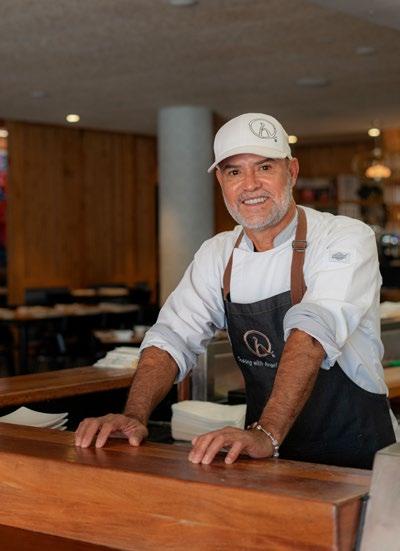
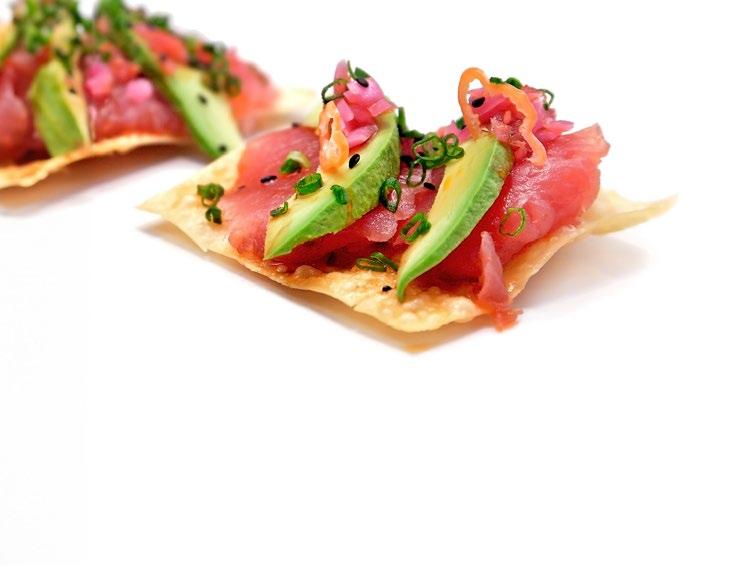

Nicksan Palmilla
The Shoppes at Palmilla
Local 116, 23470, San José del Cabo, B.C.S. (624) 122 0127 (624) 144 6262
Nicksan Cabo
Plaza de la Danza, Blvd. Paseo de la Marina, Centro, 23450 Cabo San Lucas, B.C.S. (624) 128 1537
Nicksan Nuevo Vallarta, Nayarit
Paseo Cocoteros, Nº 53 (322) 297 2464
FOODIE EDITION MAR / ABR 2024 17
#NicksanMadeInCabo
Carmen and Angel Carbajal
CHOYERO FOOD
THE AUTHENTIC FLAVOR OF BAJA CALIFORNIA SUR
To better understand what traditional regional food is in this area, you must go to the source, and to achieve this you have to have an inside contact. Fortunately, I know just the right person, Rafael Garcia, of Grupo 24, a young Choyero entrepreneur who was kind enough to arrange a meeting with six cooks to talk about the intricacies of regional Choyero food. As we all talked about methods and secrets to prepare their traditional and most favorite dishes, it became clear to me that Choyero food is the food of brave and creative spirits that decided life in this area was promising, before all the development and the comforts we see now were in place, and had the foresight to build their dreams here. It is food that took the harshness of the land and found a way to turn what it offered into simple and tasty dishes. Food that attests to the creativity of the cooks that managed to create a great variety of flavors with somewhat limited resources. Following is a sampling of some of the most representative dishes as they were presented by these incredibly talented regional cooks.
Choyero: a person born and raised in the southern part of the state of Baja California Sur, more specifically one whose family has been in the area for at least two generations and is from the area that encompasses Los Cabos, Miralores, Santiago, and surroundings all the way to La Paz. The word itself means, a person that is from the place where “Choya” cacti abound. This term was traditionally used to identify people from the sierras in BCS.
Every cook arrived with a sample of their most popular regional dish and what was going to be an interview became a wonderful conversation surrounded by great food.
Eulises Quintana, of Coffee Bar 54 in San José del Cabo is a second generation Choyero, who loves to cook regional food. He prepared beef empanadas, a perfectly crisp deep-fried turnover filled with knife-minced beef, potato, olives, and raisins, cooked into a thick stew in a mild guajillo pepper sauce. The challenge is to end up with a moist filling wrapped in a soft dough with a crispy exterior and Eulises managed to meet the challenge with ease.
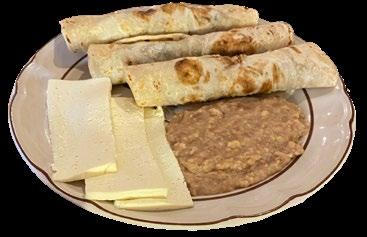
Then came Ana Rosa Ceseña, proud
By: Claudia Velo
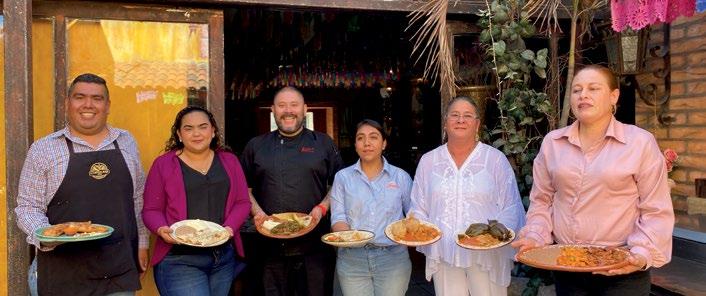
third generation Choyera, who not only cooks traditional regional food to order, but also offers cooking classes for those interested in learning how to prepare the most representative dishes in regional cuisine. Ana Rouse, as she is known in her social networks, prepared pork and sweet potato tamales, wrapped in banana leaves and pork and potato tamales wrapped in corn leaves, all cooked with a wood-fire which imparts a characteristic flavor to all her dishes. When talking about the tamales she explained that the banana leaves make for a moister tamal that slides easily off the wrapper, while corn leaves tamales tend to be a bit drier and sometimes stick to the leaves for a characteristic corn flavor. The traditional Choyero tamales add olives and raisins to the “masa” which is made with corn dough mixed until fluffy with either lard or shortening.
Yajaira Marquez, who introduced herself as a 100% Choyera from Miraflores, prepared Machaca burritos and these were no ordinary burritos. The tortillas were handmade flour tortillas, thick, soft and fluffy, the kind that can be eaten on their own and leave you feeling happy and satisfied. The machaca was also prepared the traditional way, with beef that was seasoned, sun dried, grilled and then minced. The name “machaca” comes from the verb “machacar” which means to pound, crush or grind. Yajaira mentioned that now it is common to take the meat to a mill to shred, but traditionally it was minced on a stone with a cleaver-like knife called a “machete”. The machaca is then cooked with onion, serrano peppers and potatoes, with Yajaira’s secret addition of finely minced garlic and oregano, and once ready it’s used to stuff the warm tortillas to make traditional burritos that are usually served with a side of refried beans made with chorizo from Miraflores.
Maria Rosa Castillo, another Choyera member of a longstanding family from Todos Santos now living in San José del Cabo, brought Birria which is one of the most traditional dishes in her family. A rich beef stew made with guajillo and pasilla peppers that is commonly served in traditional celebrations like birthdays, quinceañeras and weddings. The birria from this region is cooked in a thick broth and is traditionally served with refried beans, that Maria Rosa cooks with shortening and a touch of chipotle. In a move that veers from the traditional recipe that uses lard and chorizo. This, says Maria Rosa, is her way of adapting the traditional recipe to suit the taste of new clients who tend to look for lighter versions of regional food.
Whenever you talk with choyeros about food, the one dish all will mention is Sopa Fresca and this is the one dish you cannot find at any restaurant. The details of how it is
prepared vary depending on the cook, but the one ingredient that is a must is the “sopa” which is similar to pasta, picture large flour tortillas that are stretched, cut and put to dry. The dough is cut into strips, triangles or squares, and varies in thickness depending on who is making it. The sauce is made with broth, tomato and “chile colorado” either guajillo, pasilla or a combination of both, and it can be thicker or runnier depending on the preference of the family serving it. A traditional recipe will always include a can of “Salsa Del Pato”, which has been a staple in all choyero pantries for a long time. The sopa is cooked, as you would pasta, and put in the sauce. The dish is served topped with olives, raisins and shredded Queso Fresco, which is fresh cheese, usually from Miraflores. You could say that once you have been asked to have some Sopa Fresca with a local family you have become an honorary “Choyero”.
An extraordinary opportunity to sample authentic regional food is the “Sabor a Cabo Rural” gastronomic festival that always highlights regional dishes and often includes collaborations of regional cooks with established chefs from well-known restaurants.
The food of this region is as vast as its territory and the tales that surround it are fascinating. Join me in an exploration of the gastronomic landscape of Baja California Sur. In the next issue of Destino I will introduce you to delicious and little known traditional desserts and make sure to catch the online content with more on regional food.

About the Author:
Claudia Velo is the proud winner of the first ever Food Critic award from Los Cabos Culinary Awards. Claudia lives life one delicious bite at a time for her; food is the best representation of unconditional love and cooking for others is the ultimate act of kindness. She is constantly searching for new experiences and moments to savor at tables where stories and flavors create indelible memories. Her reviews are honest opinions that aim to encourage others to explore the pleasures of enjoying food beyond the search for mere sustenance.
Claudia’s favorite quote is: Nothing would be more tiresome than eating and drinking if God had not made them a pleasure as well as a necessity. – Voltaire
Claudia Velo @c_velo
FOODIE EDITION MAR / ABR 2024 18

THE CABO GOLF SCENE
by Joe Mazzeo
Los Cabos, Mexico, is renowned as the country's premier golf destination, attracting both occasional visitors and locals alike. Its world-class designers, breathtaking landscapes, and exquisite service have solidified its reputation. The golf courses offer oceanfront greens, cactus-lined fairways, desert arroyos, seaside cliffs, and gourmet cuisine at extravagant comfort stations. Los Cabos boasts exclusive private clubs and public resort courses, hosting annual events, charity outings, and weekly matches. Notably, the PGA TOUR has added a significant chapter to Cabo Golf by staging the first-ever official TOUR event in 2023, the World Wide Technology Championship.
Erik Van Rooyen from South Africa claimed victory at the championship, held at Diamante's El Cardonal course, with a thrilling eagle putt on the final hole, securing a $1.476 million winner's check. The event's impact extended beyond the competition, involving local restaurants, charities, volunteer ambassadors, and national and international media outlets. Tiger Woods, who designed El Cardonal, also made an appearance, adding to the tournament's allure. Thousands of residents and visitors attended, immersing themselves in the professional golf atmosphere and the vibrant Cabo social scene.

Another standout event in Los Cabos is the Cabo Collegiate, celebrating its 14th edition in 2024 at the Twin Dolphin Club. This annual tournament gathers top U.S. university teams for 54 holes of individual and team competition. Notable past participants include Scottie Scheffler, Viktor Hovland, Collin Morikawa, and other rising stars in the golf world. The event is highly regarded by college golf coaches and media members, often cited as the best and most well-run tournament of the season.
Founded in 2010, the Cabo Collegiate is organized by a dedicated volunteer board of directors, led by Rodger and Barbara Ann Kline. Over the years, the tournament has been hosted at various Cabo courses, including Querencia and Cabo del Sol's Cove Club, with Twin Dolphin being the host since 2023. In an exciting development, starting in 2024, the Cabo Collegiate winner will receive an invitation to participate in the WWT Championship alongside professional golfers later in the year.
This collaboration between the Cabo Collegiate and the WWT Championship offers a unique opportunity for college golfers to compete in an official PGA TOUR event, a priceless experience for those aspiring to turn professional. The Cabo connection makes this alliance a natural fit, further elevating the destination's status in the golf world.
Joe Mazzeo, Senior Vice President of Golf & Events for Wasserman and Tournament Director for the WWT Championship, emphasizes the significance of these events in putting Cabo Golf on the map. The upcoming WWT Championship is scheduled for November 4-10, 2024, at the Tiger Woods-designed El Cardonal course at Diamante Cabo San Lucas. As golf enthusiasts anticipate these world-class events, the Cabo region continues to shine as a top-tier golf destination, offering a blend of natural beauty, competitive excitement, and social allure.


Nobel Laureate George Smoot Talks Cabo, Nature, and the Urgency of Preservation
In an exclusive interview with Destino, Nobel Prize laureate George Smoot, renowned for his groundbreaking contributions to science, shared his unique perspective on Cabo, its natural beauty, and the imperative need to preserve the environment. As a seasonal resident of Cabo, Smoot has kept a low profile in the media, making this interview a rare glimpse into his personal connection with our destination.
Discovering Cabo's Relaxing Aura:
Smoot recounted his initial encounter with Cabo, revealing that about 20-25 years ago, during his global travels, he sought a place to unwind. Cabo's allure became apparent as he explored timeshare opportunities, and the tranquility of the place resonated with him deeply. "The moment I stepped here, I felt my body relax," Smoot expressed, emphasizing the calming effect of Cabo's unique atmosphere. Eventually
opting for a condo, he found solace in the quiet and relaxed environment, providing a perfect balance between work and leisure.
Cabo's Hospitality and Natural Wonders:
Smoot praised the warmth and hospitality of the local people, highlighting their welcoming attitude towards tourists. He delved into his experiences with Cabo's natural wonders, recounting adventures in bird watching, observing giant manta rays, and witnessing awe-inspiring whale jumps. According to Smoot, these experiences contribute to making Cabo an extraordinary destination.
The Gastronomic Delights of Cabo:
Sharing his love for local cuisine, Smoot emphasized the significance of trying various Mexican foods, from Carnitas to fresh seafood. He recounted a memorable family experience at La Garita, a restaurant where they made their own tortillas—a moment that added a special touch to their Christmas celebration.
Navigating Changes and the Importance of Preservation:
Reflecting on Cabo's evolution, Smoot expressed mixed feelings about its growth, acknowledging the benefits to the local community but also lamenting the loss of some rustic charm. He underscored the importance of preserving Cabo's unique culture while adapting to the future.
Addressing environmental concerns, Smoot passionately advocated for the protection of local ecosystems. Drawing from his own involvement in turtle protection programs, he called upon the audience to be mindful of their impact on the environment. He urged listeners to reconsider not only their use of plastic but also the sustainability of their consumption of local fauna.
The Global Impact of Local Actions:
Smoot emphasized the interconnectedness of global and local actions, urging individuals to think globally while acting locally. When we purchase toilet paper or paper towels here, a tree is cut down in Indonesia. (Over 6.5 million trees were cut down to make 16 billion paper cups used by US consumers only for coffee in 2006. It is estimated that approximately 27,000 trees are cut down each day to make toilet paper, that’s 10 million trees a year. Over 51,000 trees per day are cut down to meet the daily global demand of paper towels. ) He stressed the profound impact of local decisions on the global environment, emphasizing the responsibility each person holds in safeguarding our planet.
George Smoot's insights into Cabo's natural beauty, cultural richness, and the urgency of environmental preservation provide a compelling narrative. As a distinguished figure in the scientific community, Smoot's advocacy for sustainable practices and environmental awareness resonates beyond Cabo, inspiring a collective commitment to protect the world we share.
Scan to listen to full interview






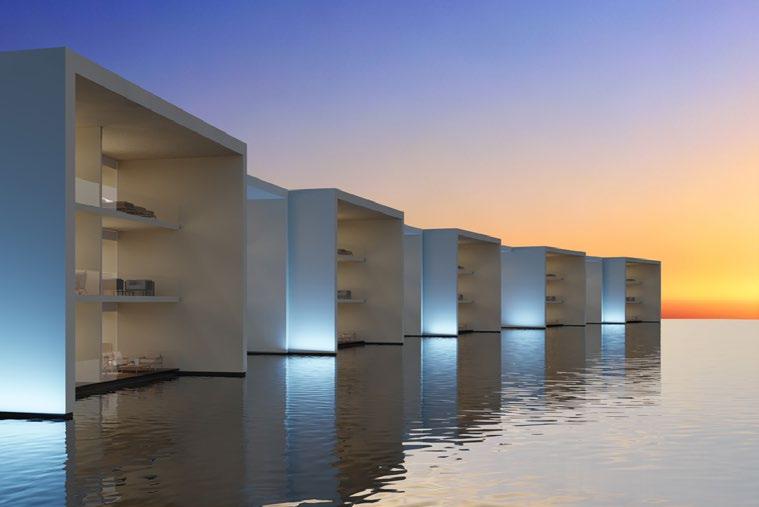





+ 5 2 6 2 4 2 4 7 6 2 4 5 C o r a L o s C a b o s . c o m
Club Campestre San José, San José Del Cabo




































































































































Hyatt Ziva Los Cabos Posada Real Los Cabos Viceroy Barceló Gran Faro Los Cabos Royal Solaris Los Cabos Cabo Azul Vidanta Los Cabos VALERIO GONZÁLEZ 15 DE MAYO 1 DE MAYO 5 DE MAYO MARGARITA MAZA CORONADO ZARAGOZA PASEOFINISTERRA PASEO DE LOS CABOS PASEOMALECÓNSANJOSÉ B L VD ANTON I O M I J ARES AVENIDA CENTENAR I O PASEO DE LAS MISIONES CARRETERA TRANSPENINSULAR PROLG. ZARAGOZA ILDEF O N S O G NEER M A R Q U E Z D E L E O N S A N T O S D E G O L L A D O MAG I STER I O MAURICIO CASTRO IGNACIOCOMONFORT C . PASEO DEL PESCADOR ORREC D E L V I G I A PLAYA BUENOS AIRES VIALIDA 2 RTNO PLAYA ITIUNA RTNOPUNTA PALMILLAS FAROVIEJO CALLE DE LA PLAYA PASEO DEL ESTERO MANUEL DOBLADO SAN JOSE DEL CABO ART DISTRICT TOLLROADTO AIRPORT TO EAST CAPE TO CABO SAN LUCAS Hospiten La Comer Hyatt Place Tropicana Inn Soriana Chedraui Selecto Walmart Plaza El Pescador Club Campestre Vidanta Golf Course MIGUEL HIDALGO RTNO PUNTAGORDA IGNAC I O ALLENDE V I C E N T E G U E R R E R O JOSE MARIA MORELOS Mision san jose del cabo Plaza ARTESANOS central plaza Plaza patio CEMENTERIO Fonatur roundabout SAINT LUKES DESTINO OFFICE san josE del cabo baja 101













































































































































FOODIE EDITION MAR / ABR Sea Of Cortez EmpacadoraBeach Lover’sBeach MedanoBeach DivorceBeach TheArch TO SAN JOSÉ DEL CABO 12 DE OCTUBRE ÁLVARO OBREGÓN CALLE CABO SAN LUCAS CARRANZA REVOLUCIÓN DE 1910 20 DE NOVIEMBRE LIBERTAD 16 DE SEPT. NIÑOS HÉROES LEONA VICARIO MORELOS FRANCISCO VILLA 16 DE SEPT. BLVD. CONSTITUYENTES PASEO DE LA GAVIOTA BLVD . PASEODELAMARINA E. ZAPATA MADERO BLVD.LÁZAROCÁRDENAS ACUARIO Puerto Paraíso Shopping Mall Luxury Avenue CAMINO REAL CAMINO VIEJO A SAN JOSÉ PELÍCANOS MARINACABO SANLUCAS OESAP LED RODACSEP HotelTesoro PASEODELA M A R I N A Seven Crown Fairfield Inn Walmart City Club Grand ResortSolmar ResortPlayaGrande Sandos Finisterra Pacific Ocean MECabo CaboVillasBeachResort&SpaPuebloBonitoBlancoPuebloBonitoRoséVillaVillaLaEstancia delArco ClubCascadas VilladelPalmar RIU CasaDoradaLosCabosBreathlessHaciendaBeachClub&Residences MEdano Suites AMC Hospital Hospiten Cabo San Lucas Marina Fiesta BLVD. PASEODELAMARINA Lienzo Charro plaza bonita mall Plaza de la Danza Plaza AMELIA WILKES Pabellón Cultural Tourist Assistance Center Cruise Ship Landing Plaza Embarcadero D P E F G H I J K L N M O C B A P P baja 101

FOODIE EDITION MAR / ABR 2024 28





























 CHRISTIAN JIMENEZ Head of Distribution
VICTOR SUÁREZ Content Strategist
ERIKA COATZIN Digital Manager
YOSELIN HIDEROA Sales
MÓNICA BULNES Editorial Coordinator
REBECA BELTRÁN Graphic Designer
CHRISTIAN JIMENEZ Head of Distribution
VICTOR SUÁREZ Content Strategist
ERIKA COATZIN Digital Manager
YOSELIN HIDEROA Sales
MÓNICA BULNES Editorial Coordinator
REBECA BELTRÁN Graphic Designer































































